Mercedes‑Benz
unveiled the latest generation of its successful Sprinter model at an event held at a logistics center in the Duisburg, Germany docks. (Duisburg is home to the world’s largest inland port.) As the first fully connected integral system solution, the third generation of the Sprinter demonstrates the development of the division from purely a vehicle manufacturer into a provider of complete transport and mobility solutions, the company said.
With new connectivity services, electric drive and individual hardware solutions for the cargo space, the large van is intended to make customers’ business in a connected world significantly more efficient. Mercedes-Benz is investing some €2.5 billion (US$3.1 billion) around the globe in the new Sprinter's development, its worldwide production network, and sales and after-sales, said Dr. Dieter Zetsche, Chairman of the Board of Management of Daimler AG and Head of Mercedes‑Benz Cars, at the event.
The current model of the Sprinter has been on the market since 2006. The new Sprinter is available for order now and will be launched in the European market starting in June 2018. Other markets will follow gradually.
As a world van, the Sprinter is on the roads in over 130 countries and has now been sold more than 3.4 million times. It has also fully lived up to its reputation as a bestseller in its last year of the current model: In total, we sold about 200,500 Sprinter vans worldwide in 2017—more than ever before.
Our new Sprinter is the first van of a new type – a fully connected integral system solution. We have made it even better with regard to its traditional strengths and have supplemented it with intelligent products and services. This makes the Sprinter an integral part of the value chain. So we are unlocking a new dimension in terms of efficiency, flexibility, connectivity and profitability for our customers. And we are doing it precisely tailored to each particular industry.
—Volker Mornhinweg, Head of Mercedes‑Benz Vans
The new Sprinter comes in more than 1,700 variants depending on body type, drive system, cab design, body length, payload, cargo-space height and equipment versions. The variety of seats offered ranges from two individual seats in the cab of a commercially used vehicle to up to 20 seats for 19 passengers plus driver. Maximum cargo volume is 17 cubic meters, with payloads of up to 5.5 metric tons.
Electrification: eSprinter to follow in 2019. In addition to the systematic further development of its highly efficient diesel engines, Mercedes-Benz Vans will in the future also offer locally emission-free electric drive in all segments and will push forward with the electrification of the commercial fleet. A start has been made with the eVito, which has been available for order since November 2017 with deliveries starting in the second half of 2018. The eVito will be followed by the eSprinter in 2019.

In dialogue between customers and the experts of Mercedes-Benz Vans, operator concepts are individually tailored to industry requirements, fleet size, driving profile to the architectural conditions for establishing a proprietary charging infrastructure on a company’s premises, thus creating a comprehensive ecosystem. In addition, basic electric vehicles can be precisely adapted to the particular intended purpose in terms of range or payload. With regard to operating costs, the electric vans are on par with comparable models powered by a diesel engine. The electric models are primarily designed for operations in city centers.
For the electrification of the Vito and Sprinter, Mercedes-Benz Vans is able to fall back on available technologies in the modular system of Mercedes-Benz Cars, thereby benefitting from economies of scale. The investments go into the adaptation of existing technologies and in-house development activities.
New Sprinter embodies the adVANce future initiative. The new Sprinter embodies the adVANce future initiative of Mercedes-Benz Vans. It reflects the strategic realignment from a pure vehicle manufacturer into a provider of complete mobility solutions. The key elements to cater for customers’ diverse needs in the commercial transport sector are tailored solutions that help to increase efficiency and productivity throughout the value chain. The new Sprinter is the first Mercedes-Benz vehicle to make adVANce solutions tangible in practice.
The van division concentrates on five areas of innovation that will be crucial for future success in the transport and logistical sector:
In the area of connectivity and Internet of Things (IoT) applications, the goal is optimum integration of a wide range of digital technologies into the vehicles of Mercedes-Benz Vans (DIGITAL@VANS).
The aim of innovative hardware solutions (SOLUTIONS@VANS) is continuous improvement of cargo space and logistics, and adaptation to changing expectations in the transport sector.
Mercedes-Benz Van Rental is the first time a brand has concentrated solely on renting out vans (RENTAL@VANS).
One initial example of the development of innovative sharing services is the joint venture with the US start-up Via (SHARING@VANS).
The eDRIVE@VANS innovation field is about the electrification of the powertrain.
New front-wheel drive, transmissions. The Sprinter’s rear and all-wheel drive is now supplemented with a new front-wheel drive system. For reasons inherent to the design, the payload of this version increases by 50 kilograms compared to rear-wheel drive. An 80-millimeter lower loading sill makes the loading/unloading of commercially used Sprinters and access/egress to and from the living and sleeping area of camper vans considerably more convenient.
Sprinter is offering two newly developed transmissions for front-wheel drive. The nine-speed automatic torque converter transmission is a first in the large van segment. The gear ranges are graduated to give an optimum balance between low consumption and agile handling. Other benefits include a low noise level and outstanding ride comfort. Drivers are able to intervene in the current shift profile manually with "Drive Select" and steering wheel shift paddles.
The new 6-speed manual transmission features maximum gearshift comfort and no irritating vibrations of the shift lever. This is made possible by the new sensor system with gear recognition.
Diesels. The 3.0-liter diesel delivers 140 kW (190 hp) and 440 N·m of torque at 1600 to 2600 rpm. As the only six-cylinder in the large van segment, it features large torque, smooth running and maximum ride comfort.
Like the 3.0-liter version, the smaller four-cylinder diesel engine has common-rail direct injection. From a displacement of 2.1 liters and with rear-wheel drive, this engine generates a choice of three outputs: 84 kW (114 hp), 105 kW (143 hp) or 120 kW (163 hp). With front-wheel drive the outputs range from 84 kW (114 hp) to 105 kW (143 hp) and 130 kW (177 hp). The most powerful version is exclusively reserved for the camper van segment.
Friction losses in the engines and belt drive have been reduced to optimize the efficiency and service life of the four-cylinder engine family. This results in high torque and great flexibility even at low speeds. The peak torque is always available at low revs and across a wide engine speed range. Depending on body type, wheelbase, roof height, drive configuration and engine variant, the fuel consumption figures of the new Sprinter vary between 6.9 and 9.7 litres of diesel per 100 kilometers (34 to 24 mpg US) (combined fuel consumption/combined CO2 emissions: 181 – 253 g/km).
Well-proven BlueTEC engine technology helps to reduce emissions. Using SCR technology (Selective Catalytic Reduction) including AdBlue as an exhaust aftertreatment process, the proportion of nitrogen oxides after combustion falls by more than 80%. The AdBlue tank capacity has increased from the 18 liters of the preceding generation to 22 liters. This increases the range between refills. Refilling is also easier now, as the filler pipe in the engine compartment is now more easily accessible. All the engines meet the locally applicable emissions legislation. In Europe this is Euro 6/VI, for example.
Infotainment, navigation and communication in one unit. The new MBUX multimedia system with a 7 or 10.25-inch touchscreen display is used for the first time in the new Sprinter. An LTE-capable module creates the necessary internet connection. As an alternative, and without a connection to the infotainment system, a communication module can be ordered for the Sprinter which creates an internet connection. The permanently installed SIM card of the LTE-capable communication module gives the vehicle a reliable and fast internet connection as a technical prerequisite for the use of Mercedes PRO connect services. When the vehicle is not on the move, the input and output of data by the driver is via a smartphone.
Control is via the high-resolution HD screen or touch control buttons on the multifunction steering wheel. Other highlights include smartphone connection via Android Auto or Apple CarPlay, and a Bluetooth interface with hands-free function for minimum distraction when telephoning on the move. The MBUX multimedia system with a 7 or 10.25-inch touchscreen also features fast hard-disc navigation with high-quality topographical 3D map representation. For the first three years the Mercedes PRO service “Live Traffic” is also available free of charge with the navigation system: this service follows the traffic situation practically in real time, and automatically adapts the route planning.
Use of the address system “what3words” is also new. Mercedes-Benz is the first automobile manufacturer to use this coordinate system, which assigns three words to any point on the earth’s surface. This makes navigation even simpler and more precise.
Safety and assistance systems. With the presentation of the new Sprinter, a whole range of optional safety and assistance systems is now available from Mercedes-Benz Vans that were previously the preserve of the passenger car series. These include the radar-based distance control system DISTRONIC, Active Brake Assist, Active Lane Keeping Assist and ATTENTION ASSIST. The optional Parking package with 360-degree camera makes another important contribution to relieving driver workload. Crosswind Assist is also on board as standard, as it makes van journeys considerably safer, especially at higher speeds and e.g. on motorways. Traffic Sign Assist draws additional attention to speed limits, no-entry and no-overtaking restrictions and their cancellation.
Two different parking assistance packages are new in the Sprinter. Both support the driver in parking and maneuvering situations by providing a better view with the help of ultrasonic sensors. The Parking package with Parking Assist and reversing camera warns the driver of obstacles with visual and acoustic signals. The sensors cover all areas in front of, next to and behind the vehicle. The visual warning by Parking Assist and the image of the reversing camera are shown in the multimedia display. Maneuvering is also assisted by dynamic guide lines.
Drive Away Assist as a further part of the Parking package assists when moving off, helping to prevent collisions caused by engaging the wrong gear or confusing the brake pedal and accelerator. If an obstacle is detected as well, the system limits the speed to 3 km/h. If the optional Blind Spot Assist is on board in addition to the Parking package, this recognizes traffic and pedestrians crossing behind the vehicle and can also brake autonomously in an emergency.
Even better all-round visibility is assured by the Parking package with 360-degree camera, which has four cameras installed at the rear end of the vehicle roof, on the two exterior mirrors and in the radiator grille. The multimedia display shows an all-round bird’s-eye view of the vehicle, giving the driver a perfect overview in awkward parking and maneuvering situations.
With the exception of all-wheel drive variants, the new Sprinter is equipped with speed-sensitive electric power steering (EPS) as standard. This allows very easy maneuvering and parking, and also feels reassuringly safe at high speeds. It assists the driver in holding the vehicle on course in crosswinds or on inclined road surfaces by actively reducing the countersteering effort. Mercedes-Benz is the first manufacturer in the Sprinter segment to also offer EPS for vehicles up to 5.5 tonnes.

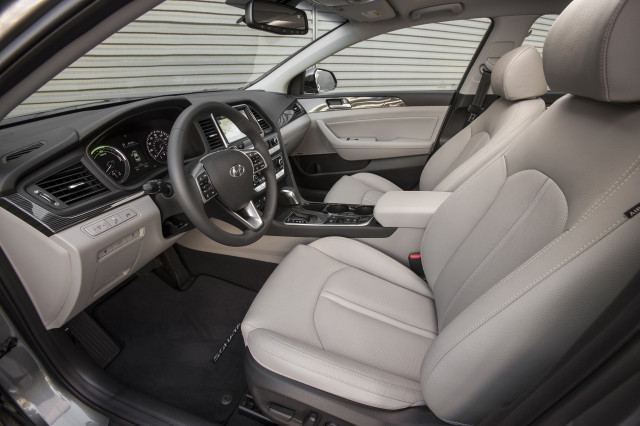
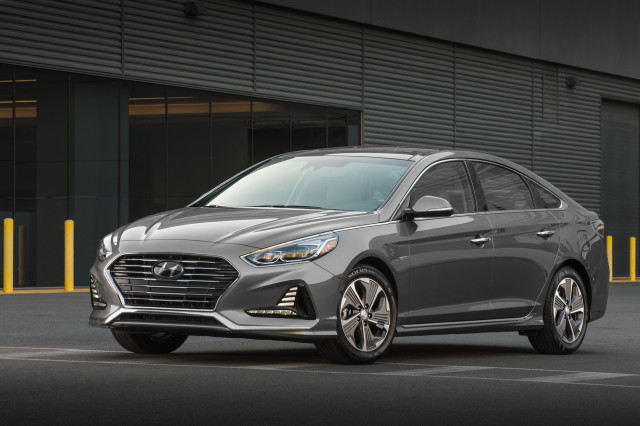
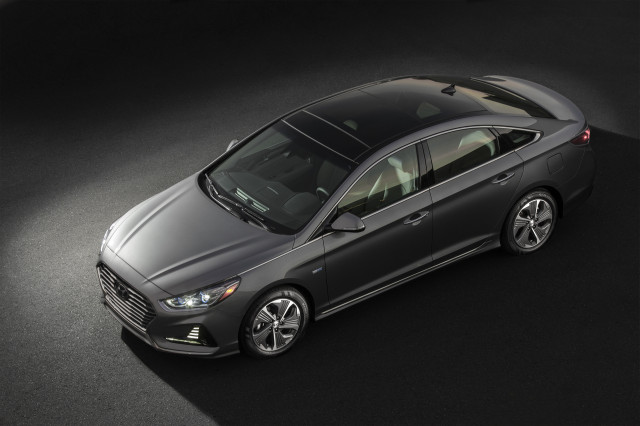

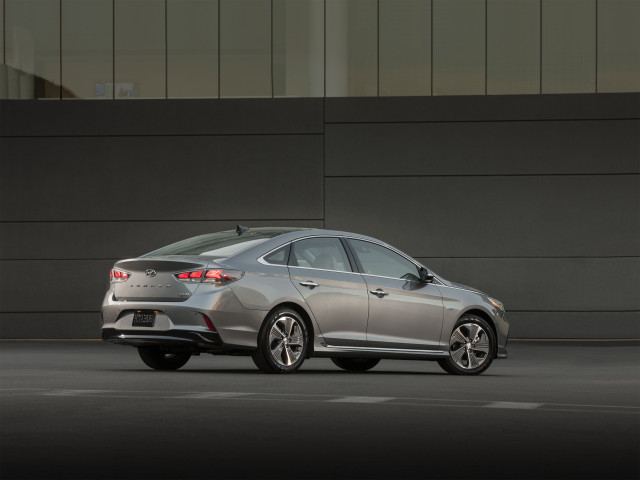





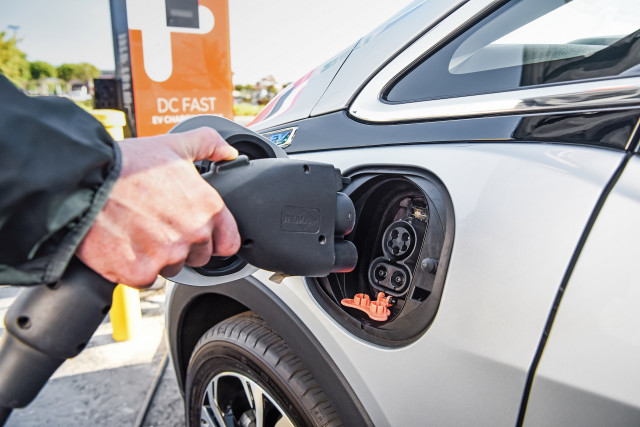
![2006 Toyota Prius and 2015 Nissan Leaf [photo: John C. Briggs] 2006 Toyota Prius and 2015 Nissan Leaf [photo: John C. Briggs]](https://images.hgmsites.net/med/2006-toyota-prius-and-2015-nissan-leaf-photo-john-c-briggs_100556682_m.jpg)


